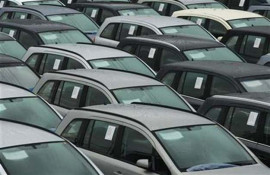
Interior minister Ahsan Iqbal said the government does not claim turning Pakistan into the US economy, but massive improvements have been made in the last five years during which PML-N has been in power.
He added that Pakistan's economy would have grown at a rate of 6.2% had political stability remained in place in the last 12 months.
His remarks came during a press conference in Islamabad for launch of the Pakistan Economic Survey 2017-18.
Pakistan registered a growth rate of 5.8% in 2017-18, the highest in the last 12 years, according to figures in the Economic Survey 2017-18.
"Pakistan would have achieved 6.2% growth had political stability not been disturbed during the last year," said Iqbal, referring to the disqualification of Nawaz Sharif, first as the country's prime minister and then party chief.
"We endured the economic cost. Despite the crisis, we have achieved 5.8% GDP."
Adviser to Prime Minister on Finance Dr Miftah Ismail, who accompanied Iqbal, said Pakistan's external debt in relation to GDP had fallen during the last five years. "The ratio has come down from 21.4% of GDP to 20.5% in 2017-18," said Ismail, adding that Pakistan may have continued to borrow money but it has also repaid old loans.
Justifying the decision to announce the budget for the upcoming fiscal year, Ismail said governments need to continue paying salaries and finance ongoing projects.
"Expenditure allocation takes place for a 12-month period. You cannot announce a budget for three or four months," said Ismail in response to a query over whether the government had the mandate to announce its sixth budget despite its tenure ending in May.
Iqbal reiterated the government's stance of announcing the budget on Friday, saying that ongoing projects need to be financed.
"There are cost overruns if the project stops. It then means that the cost estimates would go higher. Foreign funding for projects stops. We cannot afford any of this," said Iqbal.
Both officials stressed on the economy's achievements in the last five years.
After witnessing 2% growth in the last fiscal year, the agriculture sector this time performed better due to exceptional growth in cotton ginning and better performance of crops. The sector grew at a pace of 3.81% this year, against the government’s target of 3.5%.
Production of major crops saw 3.6% growth against the target of 2%. This time the minor crops also grew by 3.33% against witnessing contraction in the last year. Cotton ginning surpassed the 6.5% target and showed 8.7% growth.
Livestock also posted 3.8% growth, which is equal to its annual target. Forestry sector showed 7.2% growth but remained below the target of 10%. There was a surprising trend. The NAC revised down last year’s forestry growth figure of 14% to negative 2.3% growth rate.
Fishing sector grew by 1.63%, which almost equal to the target.
Services
The services sector, which accounts for more than half of the economy, grew by 6.43%, slightly above the target. The wholesale and retail trade posted 7.5% growth against a target of 7.2%.
Transport, storage and communication sub sector saw 3.6% growth and fell short of the 5.1% target. Finance and insurance witnessed 6.1% growth against a target of 9.5%. The housing services saw a growth of 4% and the general government services 11.4% against the target of 7%.
The government missed all its targets set for the industrial sector despite giving it a preferential treatment in supply of electricity. Heavy taxation and blockage of tax refunds affected the sector’s performance.
Against a target of 7.3%, the output in the industrial sector stood at 5.8%. The output of large-scale manufacturing stood at 6.1%, which was below the official target while small-scale manufacturing grew to 8.2%.
The slaughtering sector grew 3.5% and remained shy of the target. The electricity generation and distribution grew only 1.8% against a target of 12.5%, mining and quarrying sub sector grew 3% against a target of 3.5%. The construction sector grew at a pace of 9.1% but missed the target of 12.1%.
Despite a better economic performance, the growth rate is still insufficient to absorb the youth bulge and any pace of growth below 7% rate will increase unemployment. The government also failed to address serious issues like stagnant investments and savings in terms of total size of the GDP and stagnant exports.
The KSE-100 Index, which was Asia's top performer in 2016, underwent a massive correction the next year owing to macroeconomic stability, overvalued rupee, and political instability.
It was only after the first round of devaluation that the KSE-100 started to pick up at the end of December. It has yet to recover its losses, and market talk suggests that is unlikely till the elections take place.


















COMMENTS
Comments are moderated and generally will be posted if they are on-topic and not abusive.
For more information, please see our Comments FAQ